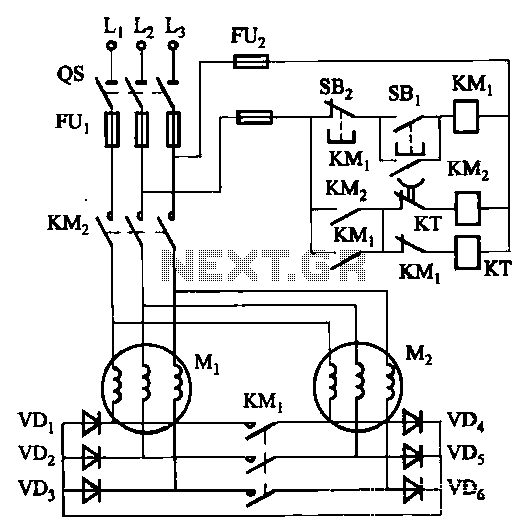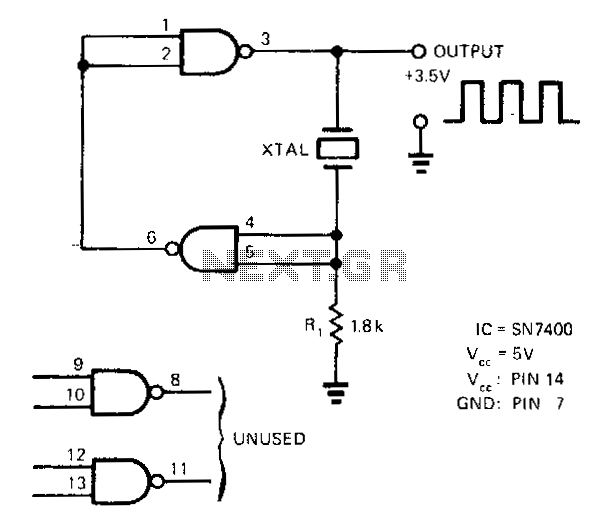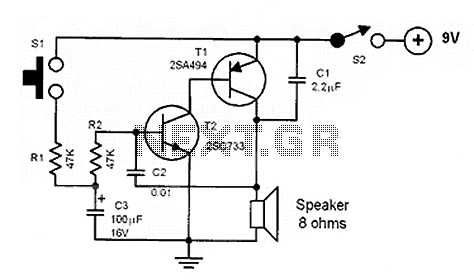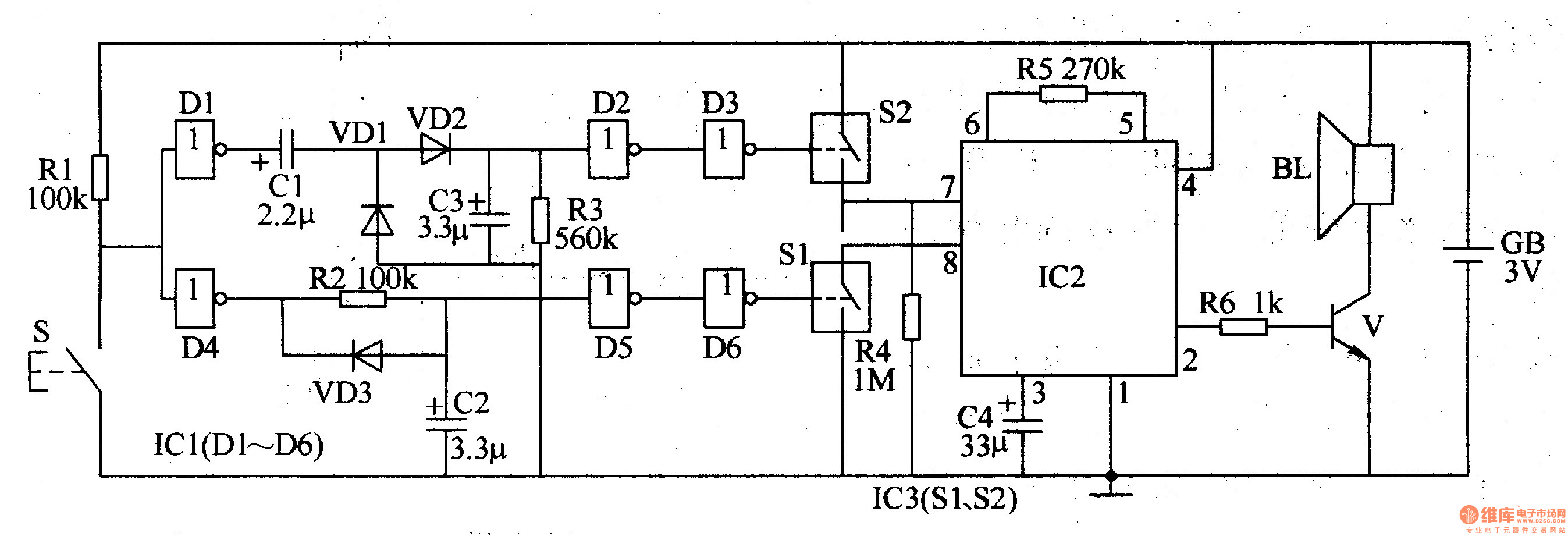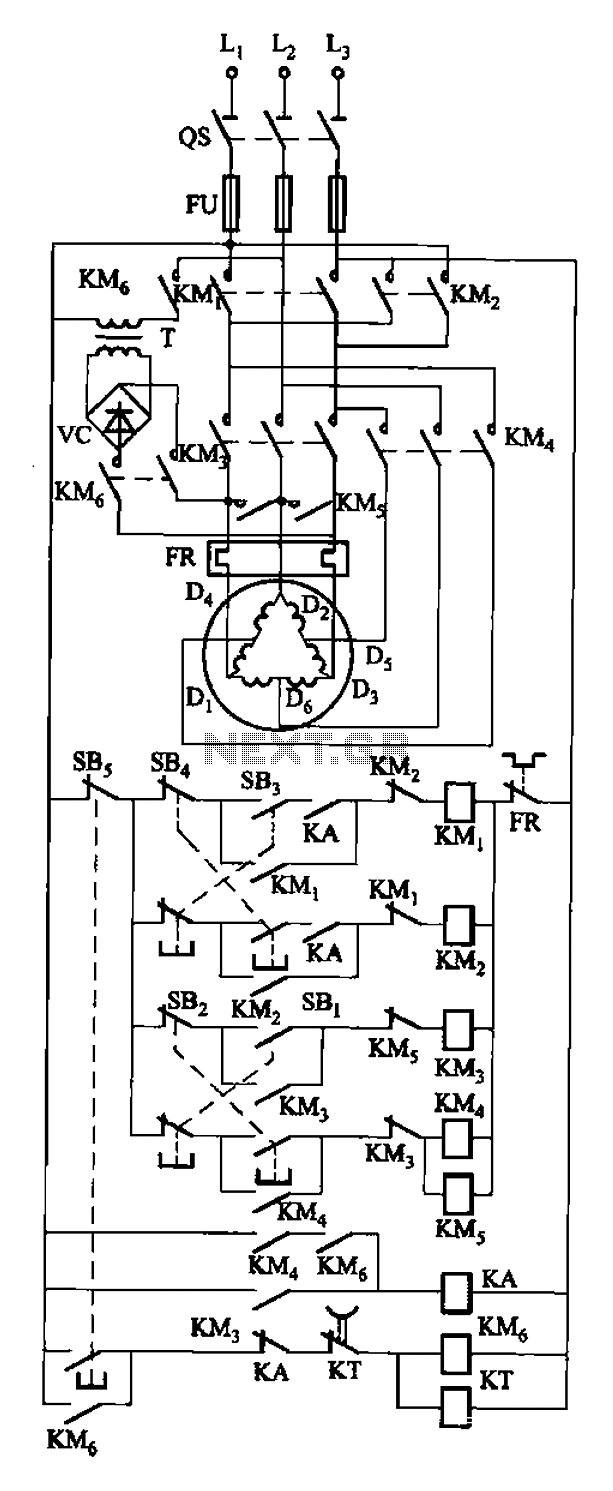
TWO QUADRANT
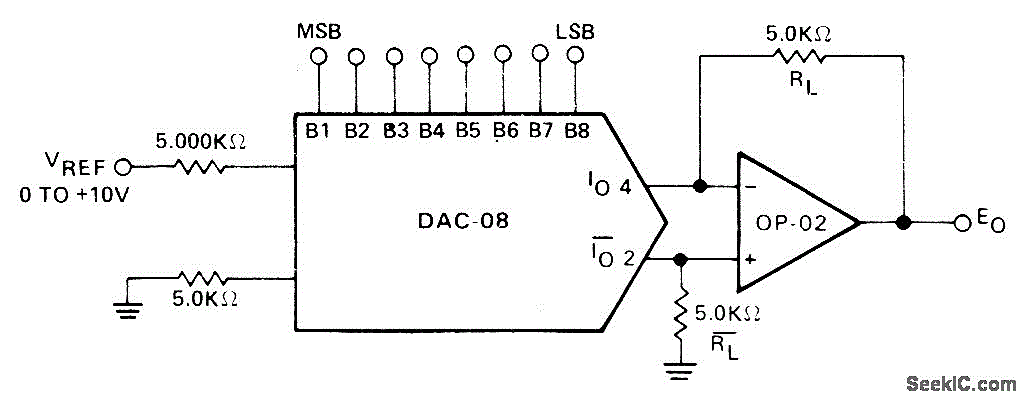
A bipolar digital multiplier has its output polarity controlled by an offset binary-coded digital input word. The Precision Monolithics DAC-08 digital-to-analog converter drives the OP-02 operational amplifier. The output is symmetrical about the ground.
The described circuit employs a bipolar digital multiplier that utilizes an offset binary-coded digital input to control the output polarity. This configuration allows for precise manipulation of the output signal, which is particularly useful in applications requiring accurate signal processing and conversion.
The core component of this circuit is the Precision Monolithics DAC-08, a highly regarded digital-to-analog converter known for its precision and reliability. The DAC-08 converts the digital input signal into an analog output, which is then processed by the OP-02 operational amplifier. The OP-02 is selected for its low noise and high-performance characteristics, enhancing the overall fidelity of the output signal.
The output of the circuit is designed to be symmetrical about the ground, meaning that it can produce both positive and negative voltage swings relative to the ground reference. This feature is essential in various signal processing applications, as it allows for the representation of bipolar signals, which are common in many electronic systems.
In summary, this bipolar digital multiplier circuit effectively translates digital inputs into precise analog outputs while maintaining symmetry about the ground, making it suitable for a wide range of applications in electronic signal processing. The combination of the DAC-08 and the OP-02 op-amp ensures high performance and accuracy in the generated output signals.Bipolar digital multiplier has output polarity controlled by offset-binary-coded digital input word. Precision Monolithics DAC-08 D/A converter drives OP-02 opamp. 0utput is symmetrical about ground. -J. Schoeff and D. Soderquist, Differential and Multiplying Digital to Analog Converter Applications, Precision Monolithics, Santa Clara, CA, 1976, AN -19, p2. 🔗 External reference
The described circuit employs a bipolar digital multiplier that utilizes an offset binary-coded digital input to control the output polarity. This configuration allows for precise manipulation of the output signal, which is particularly useful in applications requiring accurate signal processing and conversion.
The core component of this circuit is the Precision Monolithics DAC-08, a highly regarded digital-to-analog converter known for its precision and reliability. The DAC-08 converts the digital input signal into an analog output, which is then processed by the OP-02 operational amplifier. The OP-02 is selected for its low noise and high-performance characteristics, enhancing the overall fidelity of the output signal.
The output of the circuit is designed to be symmetrical about the ground, meaning that it can produce both positive and negative voltage swings relative to the ground reference. This feature is essential in various signal processing applications, as it allows for the representation of bipolar signals, which are common in many electronic systems.
In summary, this bipolar digital multiplier circuit effectively translates digital inputs into precise analog outputs while maintaining symmetry about the ground, making it suitable for a wide range of applications in electronic signal processing. The combination of the DAC-08 and the OP-02 op-amp ensures high performance and accuracy in the generated output signals.Bipolar digital multiplier has output polarity controlled by offset-binary-coded digital input word. Precision Monolithics DAC-08 D/A converter drives OP-02 opamp. 0utput is symmetrical about ground. -J. Schoeff and D. Soderquist, Differential and Multiplying Digital to Analog Converter Applications, Precision Monolithics, Santa Clara, CA, 1976, AN -19, p2. 🔗 External reference
